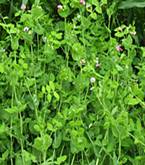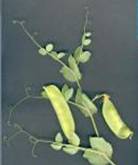AGR 301 :: Lecture 07 :: FIELDPEA Pisum sativum
![]()
- Matar in Hindi
- Third important cool season crop next to chickpea and French bean
- Cultivated in about 6.51 million ha world wide with 10.95 million t annually
- Distributed in Asia, Africa, Europe, N.America, & Auastralia
- Usually cultivated for dry pods and variety of snacks



World area production and productivity of Fieldpea
Country |
Million ha |
Million t |
T / ha |
Europe |
3.28 |
6.77 |
2.06 |
France |
0.53 |
2.57 |
4.84 |
Russian Federation |
1.18 |
1.00 |
0.85 |
Asia |
1.58 |
1.87 |
1.19 |
China |
0.70 |
1.15 |
1.64 |
India |
0.62 |
0.56 |
0.91 |
N C America |
0.72 |
1.40 |
1.96 |
Canada |
0.63 |
1.26 |
2.00 |
Australia |
0.31 |
0.38 |
1.24 |
South America |
0.12 |
0.10 |
0.82 |
World |
6.52 |
10.95 |
1.68 |
Indian scene of Fieldpea
State |
Million ha |
Million t |
T / ha |
UP |
0.41 |
0.54 |
1.32 |
MP |
0.19 |
0.08 |
0.41 |
Assam |
0.03 |
0.02 |
0.61 |
Rajasthan |
0.01 |
0.02 |
2.19 |
All India |
0.73 |
0.72 |
0.95 |
- Origin
- Mediterranean region of Europe & West Asia
- Before 3000 BC
- Plant
- There are two varieties
- Gardenpea : P. sativum var. hortense
- Filedpea : P. sativum var. arvense
- Annual herbaceous well developed tap root system plant
- Plant - gardenpea
- Flowers auxiliary, long peduncle, raceme with 1-2 flowers
- Pods are variable length and breadth, curved/ straight
- Plant - Fieldpea
- Flowers are purple or lavender colored
- Short peduncle
- Seeds smaller than garden pea, angular
- Varieties
- Rachna, Pant Marter 5, HUP 2, DMR 11
- Crop duration 110-140days
- Seed weighs 160 – 240mg
- Soil
- All types of soil
- Poor to fertile
- Well drained soil is more suitable since sensitive to salinity and alkalinity
- Field preparation
- On heavy soils rough seed bed is suitable
- Medium tillage is sufficient
- Seed treatment
- For seed borne pests and diseases
- Rhizobium for nodulation
- Season
- NW Plains – end of October
- NE Plains – Second fortnight of November
- Soil moisture availability decides the time
- Delay in sowing end with terminal drought
- Seed rate
- Depends up on the size of the seeds & spacing
- 50-60 kg for small seeded and 80-90 kg for bold seeded
- Method of sowing
- Broadcasting and planking
- Drilling manually
- Seed drill sowing
- Depth of sowing
- Since all cool season pulses are hypogeal can be planted deep depending on the moisture
- Nutrient Management
Ecosystem |
Planting time |
N |
P2O5 |
K2O |
S |
Rainfed |
Normal |
20 |
40 |
0 |
20 |
Irrigated |
Normal |
40 |
40 |
20 |
20 |
|
Late |
40 |
40 |
20 |
20 |
- Crops are sown in residual soil moisture
- They may face terminal drought
- One or two supplemental irrigation is needed
- May be moisture conservation practices
- Weed management
- All methods to be employed
- Herbicides can also be as per kharif pulses
- Cropping systems
- Cereal – legume is always good
- They also under mixed community with winter cereals like wheat and barley
- Harvest
- Over ripening leads to great loss of yield
- Staggered harvesting is one way
- Cut entire plant and carry with moisture & then dry and thrash, clean
- Store the seeds at 8-10% moisture
Multiple choice questions
- Pea is commonly known as ___________
a. Arhar b. Channa c. Matar - Centre of origin of pea is ___________
a. Mediterranean b.America c. W.bengal - The inflorescence of pea is called __________
a. Ear b. panicle c. Axilary raceme - The recommended seed rate for pea is _____kg/ha
a. 60-80 b. 75-100 c.40-50 - Pea crop needs ________
a. Cold & dry climate b. Hot & humid c. dry & hot - Pea should be treated with rhizobium inoculation of ________
a. R. Japonicum b. R. leguminosarum c. R. glycine - How much seed of Pea should be treated with one packet of rhizobium culture
a. 5 kg b. 10 kg c. 15 kg - What is the ideal temperature for germination for pea
a. 15-200c b. 22-250c c. 25-300c - Maximum area under pea cultivation in India is in
a. M.P b. U.P c. Bihar - Higher yield of pea could be achieved by
a. Use of higher dose of phosphate
b. Adequate amount of N
c. No nitrogen application
| Download this lecture as PDF here |
![]()